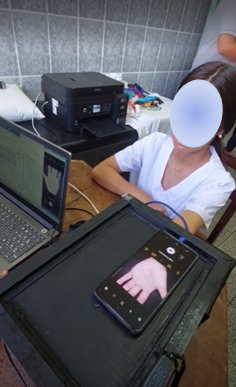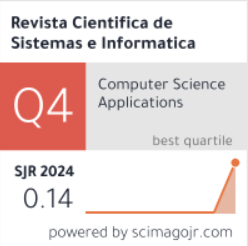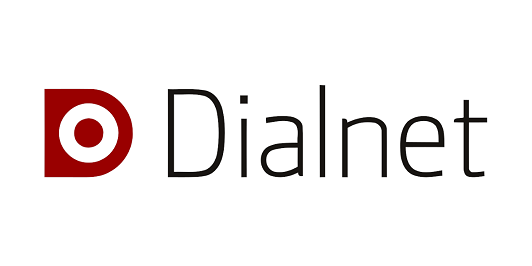Non-invasive multimodal dataset for the detection of iron deficiency anemia in young adults: fingertip videos, palm videos, and nail photographs
DOI:
https://doi.org/10.51252/rcsi.v5i2.955Keywords:
artificial intelligence, biomedical videos, clinical dataset, computer vision, hemoglobin, machine learning, non-invasive detectionAbstract
Iron deficiency anemia affects a significant proportion of the young population in both rural and urban areas of Peru. In response to the need for non-invasive, accessible, and reproducible methods for its detection, we developed this dataset as part of a research project funded by the Universidad Nacional de San Martín, which applies computer vision techniques to automatically classify patients as anemic or non-anemic. The aim is to provide a standardized base of videos and images that supports the development and validation of classification and regression models to estimate hemoglobin levels without the need for blood extraction. This data paper presents a multimodal dataset composed of non-invasive visual records collected to facilitate the detection of iron deficiency anemia in young adults through machine learning models. The dataset includes 909 fingertip videos, 909 palm videos (with controlled hand opening), and 909 nail photographs, all linked to individual clinical data such as age, sex, hemoglobin level, and symptomatology.
Downloads
References
Alkhaldy, H., Hadi, R., Alghamdi, K., Alqahtani, S., Al Jabbar, I. H., Al Ghamdi, I., Bakheet, O. E., Saleh, R. M., Shehata, S., & Aziz, S. (2020). The pattern of iron deficiency with and without anemia among medical college girl students in high altitude southern Saudi Arabia. Journal of Family Medicine and Primary Care, 9(9), 5018. https://doi.org/10.4103/jfmpc.jfmpc_730_20
An, R., Huang, Y., Man, Y., Valentine, R. W., Kucukal, E., Goreke, U., Sekyonda, Z., Piccone, C., Owusu-Ansah, A., Ahuja, S., Little, J. A., & Gurkan, U. A. (2021). Emerging point-of-care technologies for anemia detection. Lab on a Chip, 21(10), 1843–1865. https://doi.org/10.1039/D0LC01235A
Chakraborty, J., Majumder, S., & Menzies, T. (2021). Bias in machine learning software: why? how? what to do? Proceedings of the 29th ACM Joint Meeting on European Software Engineering Conference and Symposium on the Foundations of Software Engineering, 429–440. https://doi.org/10.1145/3468264.3468537
Del Castillo, L., Cardona-Castro, N., Whelan, D. R., Builes, J. P., Serrano-Coll, H., Arboleda, M., & Leon, J. S. (2023). Prevalence and risk factors of anemia in the mother–child population from a region of the Colombian Caribbean. BMC Public Health, 23(1), 1533. https://doi.org/10.1186/s12889-023-16475-0
Khani Jeihooni, A., Hoshyar, S., Afzali Harsini, P., & Rakhshani, T. (2021). The effect of nutrition education based on PRECEDE model on iron deficiency anemia among female students. BMC Women’s Health, 21(1), 256. https://doi.org/10.1186/s12905-021-01394-2
Navarro-Cabrera, J. R., Valles-Coral, M. A., Farro-Roque, M. E., Reátegui-Lozano, N., & Arévalo-Fasanando, L. (2025). Machine vision model using nail images for non-invasive detection of iron deficiency anemia in university students. Frontiers in Big Data, 8. https://doi.org/10.3389/fdata.2025.1557600
Perez-Plazola, M. S., Tyburski, E. A., Smart, L. R., Howard, T. A., Pfeiffer, A., Ware, R. E., Lam, W. A., & McGann, P. T. (2020). AnemoCheck-LRS: an optimized, color-based point-of-care test to identify severe anemia in limited-resource settings. BMC Medicine, 18(1), 337. https://doi.org/10.1186/s12916-020-01793-6
Prieto-Patron, A., V. Hutton, Z., Fattore, G., Sabatier, M., & Detzel, P. (2020). Reducing the burden of iron deficiency anemia in Cote D’Ivoire through fortification. Journal of Health, Population and Nutrition, 39(1), 1. https://doi.org/10.1186/s41043-020-0209-x
Quiliche Castañeda, R. B., Turpo-Chaparro, J., Torres, J. H., Saintila, J., & Ruiz Mamani, P. G. (2021). Overweight and Obesity, Body Fat, Waist Circumference, and Anemia in Peruvian University Students: A Cross-Sectional Study. Journal of Nutrition and Metabolism, 2021, 1–9. https://doi.org/10.1155/2021/5049037
Valles-Coral, M. A., Navarro-Cabrera, J. R., Pinedo, L., Injante, R., Quintanilla-Morales, L. K., & Farro-Roque, M. E. (2024). Non-Invasive Detection of Iron Deficiency Anemia in Young Adults Through Finger-Tip Video Image Analysis. International Journal of Online and Biomedical Engineering (IJOE), 20(14), 53–70. https://doi.org/10.3991/ijoe.v20i14.50141
Williams Asare, J., Appiahene, P., Timmy Donkoh, E., & Dimauro, G. (2023). Iron deficiency anemia detection using machine learning models: A comparative study of fingernails, palm and conjunctiva of the eye images. Engineering Reports, e12667. https://doi.org/10.1002/ENG2.12667
World Health Organization. (2021). Anaemia in women and children. The Global Healt Observatory. https://www.who.int/data/gho/data/themes/topics/anaemia_in_women_and_children

Downloads
Published
How to Cite
Issue
Section
License
Copyright (c) 2025 Miguel Angel Valles-Coral, Richard Injante, Jorge Raul Navarro-Cabrera, Lloy Pinedo, Luis Gerardo Salazar-Ramirez, María Elena Farro-Roque, Luz Karen Quintanilla-Morales

This work is licensed under a Creative Commons Attribution 4.0 International License.
The authors retain their rights:
a. The authors retain their trademark and patent rights, as well as any process or procedure described in the article.
b. The authors retain the right to share, copy, distribute, execute and publicly communicate the article published in the Revista Científica de Sistemas e Informática (RCSI) (for example, place it in an institutional repository or publish it in a book), with an acknowledgment of its initial publication in the RCSI.
c. Authors retain the right to make a subsequent publication of their work, to use the article or any part of it (for example: a compilation of their works, notes for conferences, thesis, or for a book), provided that they indicate the source of publication (authors of the work, journal, volume, number and date).









